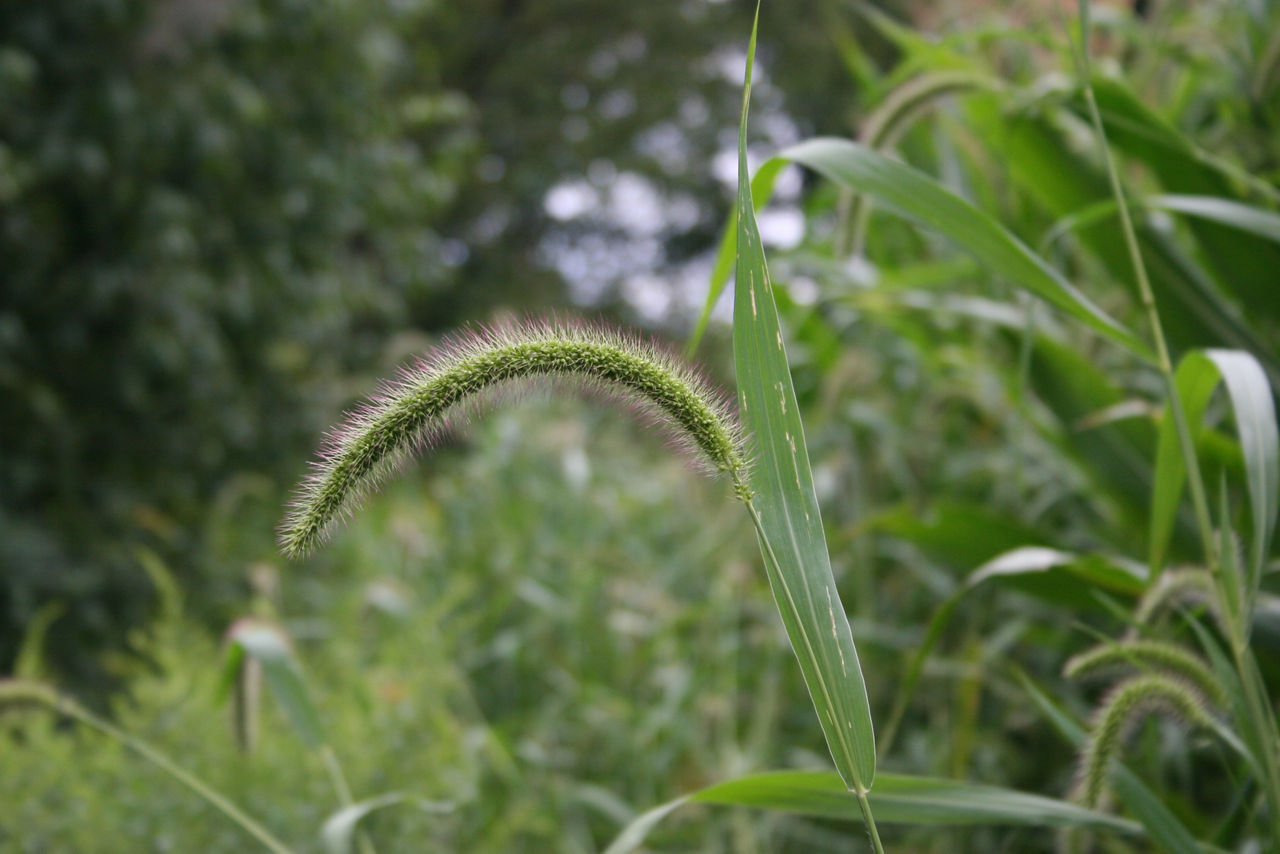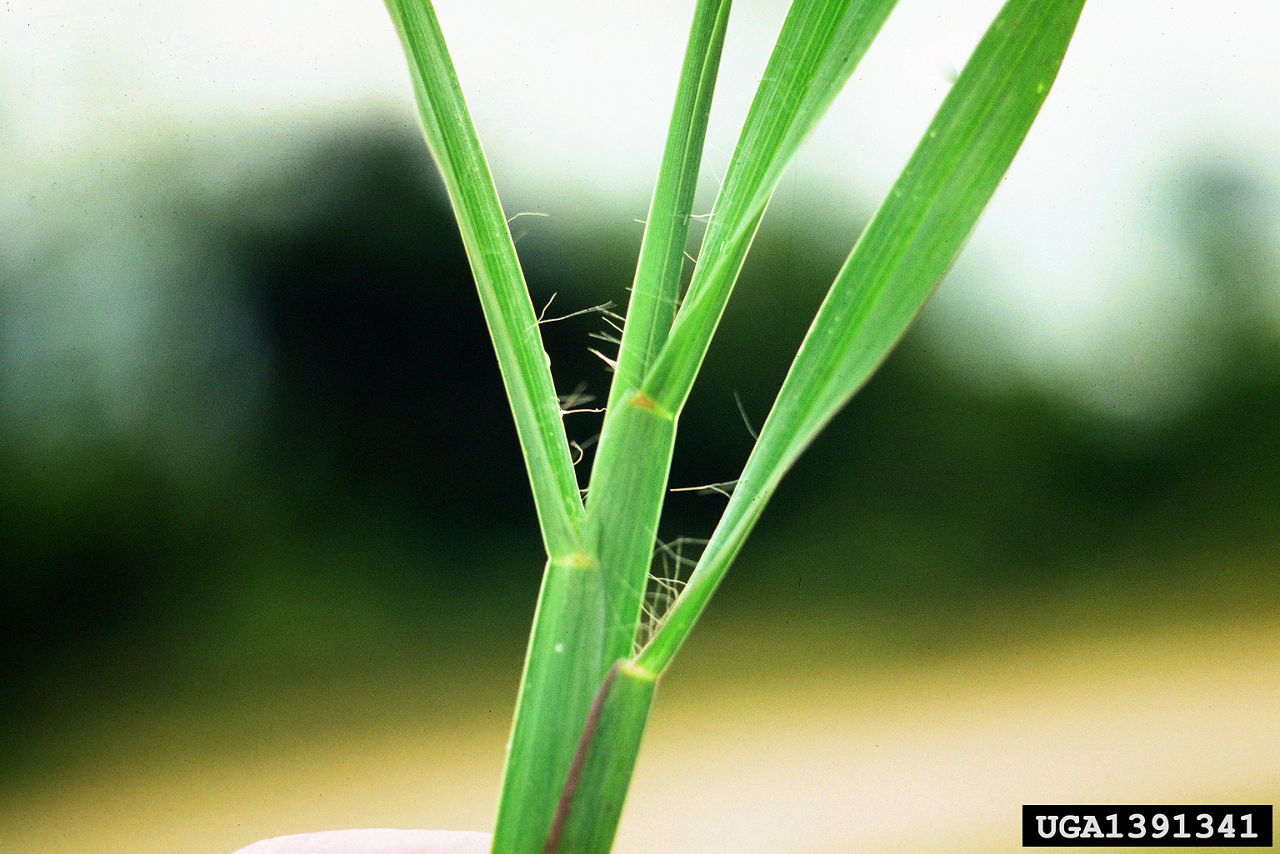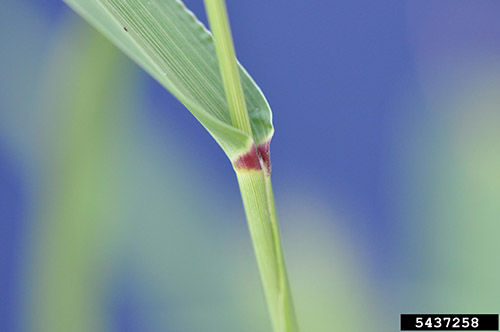Foxtail Identification
January 13, 2023
A part of good weed management is knowing what weeds you are trying to control – foxtails are no exception. One foxtail species may be controlled by an herbicide while another species is not. As an example, quizalofop herbicide by itself controls green and yellow foxtail very well, but tankmix a broadleaf herbicide with quizalofop and the control for yellow foxtail is reduced. Therefore, a different grass herbicide may be warranted.
Identifying the different foxtails is relatively easy after knowing what to look for, even as a seedling. All foxtail species have a hairy ligule and have the typical foxtail seedhead; however, the length and arrangement of the hair on leaf blades are defining characteristics (Figure 1).


Figure 1. Foxtail seedheads – Giant (top), yellow (center), and green (bottom). Green foxtail seedhead (bottom) courtesy of and used with the permission of Howard F. Schwartz, Colorado State University, Bugwood.org.
Giant foxtail is the hairiest of green, yellow, and giant foxtail. It has a hairy ligule and short hairs all along the upper surface of the leaf blade (Figure 2). Bending the leaf blade and holding it up to the light may aid in identification.


Figure 2. Giant foxtail with hairy ligule (top) and short hairs on leaf blade (bottom).
Yellow foxtail has a hairy ligule with very little hair on the leaf blade except for long hairs, at the base of the leaf blade, which are usually easy to see (Figure 3).


Figure 3. Yellow foxtail with hairy ligule (top) and long hair at the base of the leaf blade (bottom). Long hair picture courtesy of and used with the permission of John D. Byrd, Mississippi State University, Bugwood.org.
Green foxtail has the hairy ligule, little or no hair on the interior leaf sheath, and hair on the leaf sheath margin (Figure 4).


Figure 4.Green foxtail hairy ligule (top) and hairless leaf (botom). Ligule picture (top) courtesy of and used with the permission of Bruce Ackley, The Ohio State University, Bugwood.org. Leaf picture (botom) courtesy of and used with the permission of John D. Byrd, Mississippi State University, Bugwood.org.
Other grass plants that can be confusing include:
- Wild proso millet has long hair on both sides of the leaf sheath and the hair is perpendicular to the stem.
- Large and smooth crabgrass have a membranous ligule.
- Fall panicum leaf sheaths are shiny and have varying amounts of hair. Older plants have a prominent, white midrib.
- Woolly cupgrass has a hairy ligule and leaves with lots of fine hair that feels soft and fuzzy if rubbed on upper lip. The first leaf is wider compared to that of foxtails, which are long and thin.
- Barnyardgrass has little or no hair on the leaf blade, which is like green foxtail. However, the ligule is absent.
Sources
Cornell weed identification. Agricultural Weed ID for New York State. Cornell University. https://blogs.cornell.edu/weedid/.
North Carolina extension gardener handbook. AG-831. 2022. NC State Extension. North Carolina State University. https://content.ces.ncsu.edu/extension-gardener-handbook/.
Legal Statements
ALWAYS READ AND FOLLOW PESTICIDE LABEL DIRECTIONS. Performance may vary, from location to location and from year to year, as local growing, soil and weather conditions may vary. Growers should evaluate data from multiple locations and years whenever possible and should consider the impacts of these conditions on the grower’s fields. Channel® and the Arrow Design® and Seedsmanship At Work® are registered trademarks of Channel Bio, LLC. Bayer and Bayer Cross are registered trademarks of Bayer Group. All other trademarks are the property of their respective owners. ©2023 Bayer Group. All rights reserved.
You may also like...
Here are some articles that may also be of interest to you